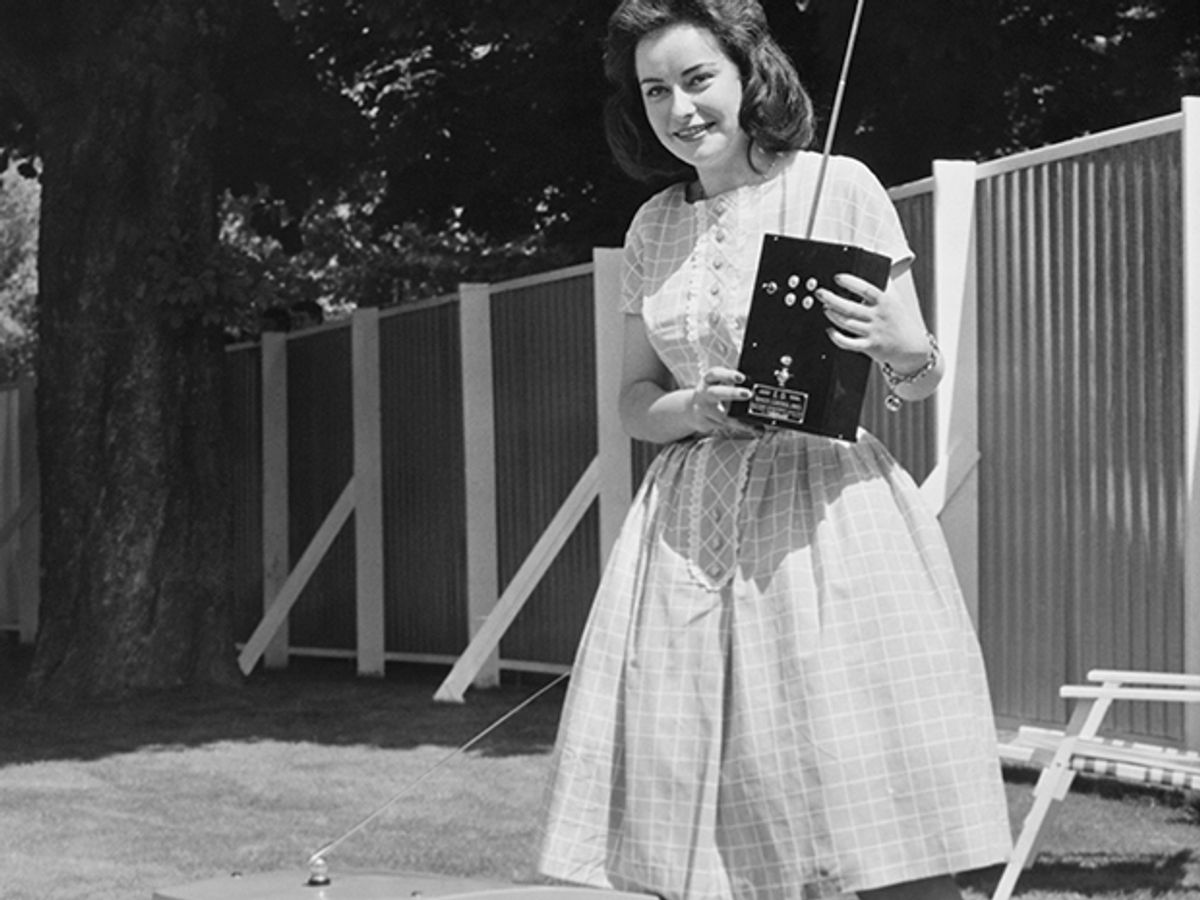Apart from the flowers, the most exciting attraction at the 1959 Chelsea Flower Show in London was probably Queen Elizabeth II. The most exciting attraction for Queen Elizabeth herself may well have been H.C. Webb & Co.’s radio-controlled electric lawn mower. The machine made its debut there as part of The Times’ Garden of Tomorrow, and was on display at the Miracle Garden Exhibition in Paris [above] the following year. Video footage shows the queen and Prince Philip watching the lawn mower with the same sort of bemusement exhibited by people watching robot demonstrations today.

The September 1960 issue of Radio Control Models and Electronics called the machine a “lazy gardener’s dream of heaven” [PDF]. It had a top speed of just over 3 kilometers per hour, and the radio control worked from up to 0.4 km away. A pair of 12-volt car batteries powered a ¼-horsepower electric motor, giving the mower a run time of about 2.5 hours. An independent suspension helped to smooth out bumps, and a 36-centimeter blade making 55 clips to the meter kept lawns looking prim and proper.
Operating the mower was easy, according to one engineer involved in its development, as long as you paid attention: “After a few preliminary runs I soon became quite proficient and was soon doing the most intricate maneuvers around the flower beds, and in and out of the trees, through narrow gaps, stopping inches from obstacles. Eventually, however, the mower came to an abrupt stop, wrapped around a small tree. In my excitement I had forgotten just for a second that the direction was reversed coming towards me.”
The large Webb remote controlled more than just the mower—it also toggled sprinklers. Elsewhere at the Chelsea Flower Show, a high-tech greenhouse featured broad-spectrum fluorescent lighting, humidity sensors that triggered an automatic misting, and a glass roof that could cool down by flooding itself with green-dyed water.
A reporter from Farm Implement and Machinery Review observed that the Webb lawn mower “ran like a large clockwork mouse” but added that “how far such prototypes will affect agricultural engineering is conjectural.” As it turned out, with a few exceptions, they have not affected agricultural engineering much at all. Mowing the lawn is still a task mainly left to teenagers to do the old-fashioned way.
This article appears in the January 2017 print issue as “Lawn Care for the Lazy.”
Part of a continuing series looking at old photographs that embrace the boundless potential of technology, with unintentionally hilarious effect.
Evan Ackerman is a senior editor at IEEE Spectrum. Since 2007, he has written over 6,000 articles on robotics and technology. He has a degree in Martian geology and is excellent at playing bagpipes.



